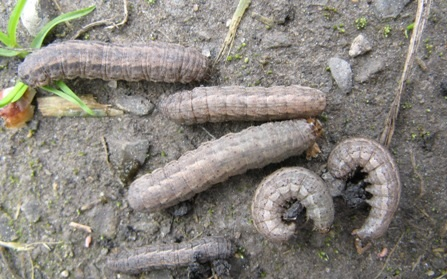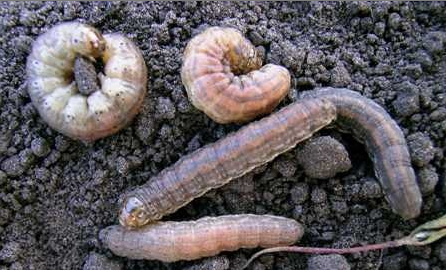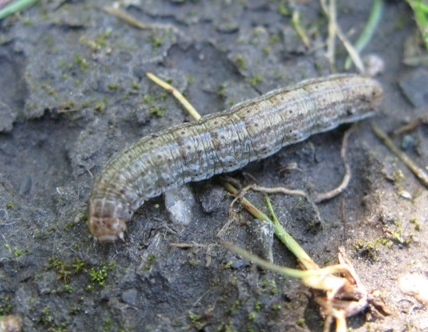Source: South Dakota State University Extention
By Anitha Chirumamilla, Entomology Field Specialist
Alfalfa is nearing the first-cut stage and many fields have been sprayed for alfalfa weevil. The growers who did not spray and used early cutting to avoid weevil damage have to be cautious and check for the delay in regrowth.
The weevil larvae tend to hide beneath the windrows and feed on the new growth. Those who sprayed early should also check for injury on regrowth as the larvae that escaped the spray can still cause damage. Insecticide application is recommended if regrowth is delayed or eight or more larvae are found per square foot.
For information on insecticides labeled for use on alfalfa weevils in South Dakota, refer to the 2015 South Dakota Alfalfa and Oilseeds Pest Management Guide.
Sunflower plantings are picking up pace in South Dakota and it is time to watch for cutworms. These caterpillars feed on sunflower seedlings and eventually become moths.
Although occasional pests, at high numbers they have the ability to cause severe damage by affecting the plant stand. South Dakota has three common species; dingy, redbacked and darksided cutworms.
-
Dingy cutworm: Larvae are dull brown mottled with cream color. A pale stripe runs on the middle of the back with diagonal markings on either side.

-
Redbacked cutworm: Larvae are dull brown to gray with two dull reddish stripes along the back.

-
Darksided cutworm: Larvae are pale brown on the dorsal side and white on the ventral side with several indistinct stripes on the lateral sides.

Scouting & Management Recommendations
Adult moths emerge August through September and lay their eggs in soil. The redbacked and darksided cutworms overwinter in the soil as eggs and the dingy cutworm as partially grown larvae. In spring the eggs hatch or the larvae resume their feeding.
Cutworms feed on the roots and stems below the soil surface as well as cut the stems and defoliate leaves above the soil surface. They feed at night and hide in soil during the day.
While scouting for cutworms, it is important to check for missing spots or seedling injury symptoms and dig the soil around the plants for larvae. Sampling should be done by checking five random sites in the field and digging five one square foot areas per site (total of 25 samples per field). The economic threshold is one larva per square foot or 25-30% stand loss.
Fields should be monitored frequently during the seedling stage, especially the ones with weeds on the borders and poorly drained areas. Seed treatment can suppress the cutworm activity and a post-emergent chemical application during night time protects from surface feeding cutworms.
For information on insecticides labeled for use on cutworms in South Dakota, refer the 2015 South Dakota Alfalfa and Oilseeds Pest Management Guide.






Post a comment
Report Abusive Comment